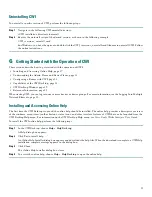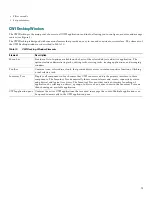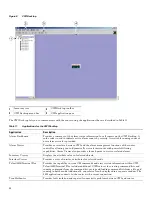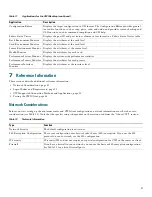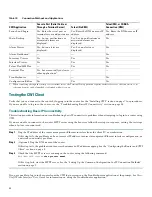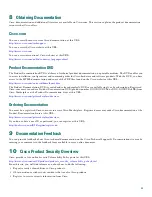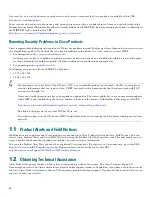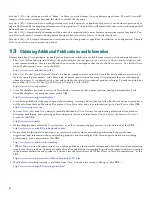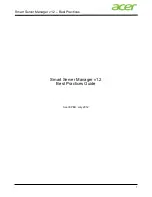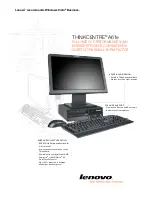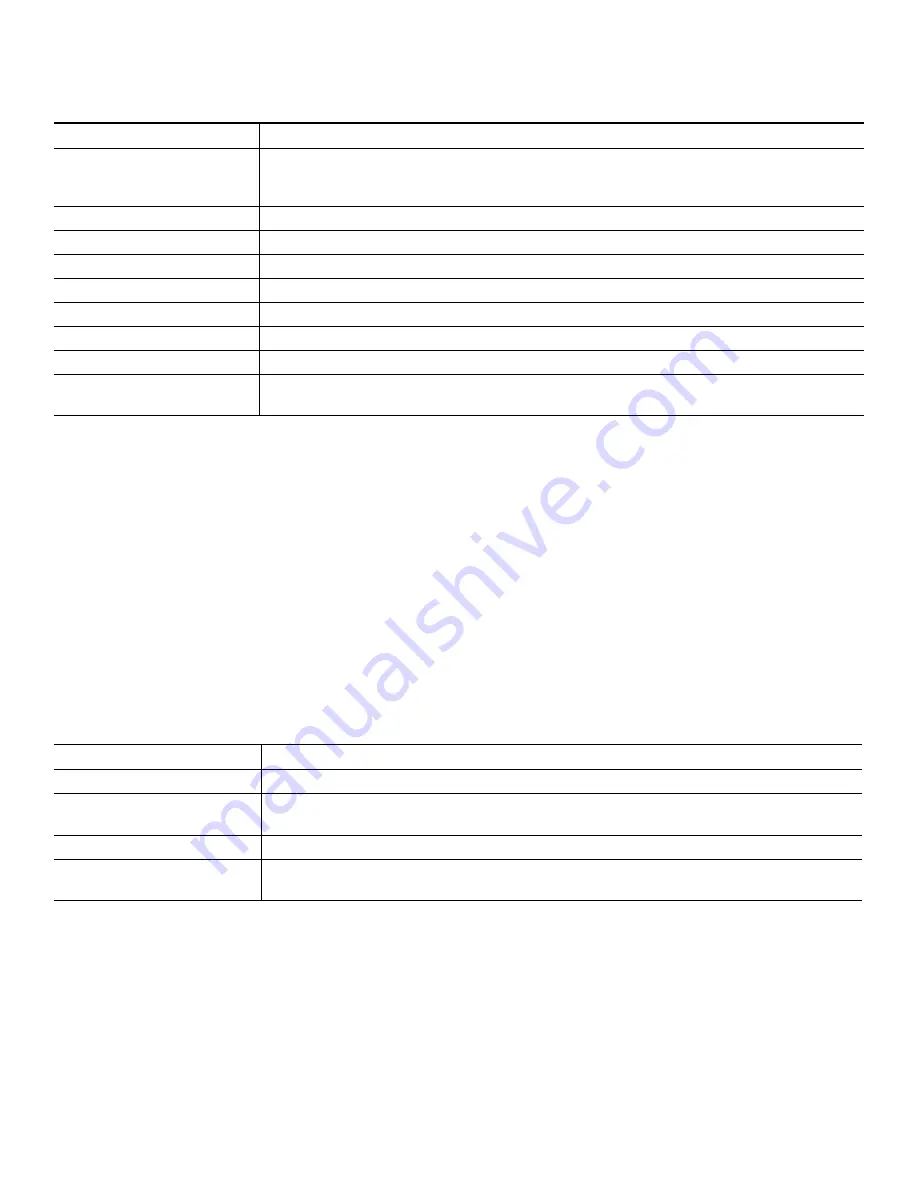
21
7
Reference Information
These sections describe additional reference information:
•
Network Considerations, page 21
•
Login Modes and Requirements, page 22
•
CWI Supported Connection Methods and Applications, page 23
•
Testing the CWI Client, page 24
Network Considerations
Before you start setting up the minimum router and CWI client configurations, network information must be taken into
consideration (see Table 12). Note that the specific setup is dependent on the session used from the “About CWI” section.
Configuration Editor
Displays the target configuration in CLI format. The Configuration Editor provides general
text editor functions, such as copy, paste, redo, and undo, and provides syntax checking and
CLI functions, such as command completion and CLI help.
Fabric Status Viewer
Displays the port ID and port status columns in text format in a Fabric Status Viewer table.
Rack Environment Monitor
Displays the attributes at the rack level.
Card Environment Monitor
Displays the attributes at the card level.
Sensor Environment Monitor
Displays the attributes at the sensor level.
Health Monitor
Displays the attributes for each card.
Performance System Monitor
Displays the system-wide performance statistics.
Performance Process Monitor
Displays the attributes for each process.
Performance Interface
Monitor
Displays the attributes at the interface level.
Table 12
Network Information
Type
Function
Network Security
The default configuration is not secure.
SSL Encryption Configuration The secure configuration uses Secure Socket Layer (SSL) encryption. If you use the SSL
protocol on your network, use the SSL configuration.
IP Security
IP security (IPSec) does not require any special configuration for CWI on the router or client.
Firewall
If you have a firewall in your network, you can use the basic or SSL encryption configuration.
See Table 13 for a list of firewall ports.
Table 11
Applications for the CWI Desktop (continued)
Application
Description











